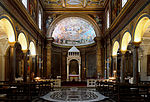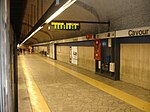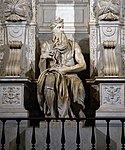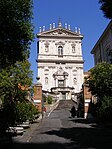Santi Sergio e Bacco

Santi Sergio e Bacco (Ukrainian: Катедральний храм Святих мучеників Сергія і Вакха та Жировицької ікони Пресвятої Богородиці, romanized: Katyedralniy khram Svyatikh moochyenikіv Syerguіya і Vakkha ta zhirovitzkoyi іkoni Pryesvyatoyi Boguoroditzі) is a Catholic church of the Byzantine Rite located on Piazza Madonna dei Monti in the rione of Monti in Rome, Italy. Saints Sergius and Bacchus are said to have been early fourth-century Roman military officers and Christian martyrs buried in Syria. In the 9th century the church was known as Sergius and Bacchus in Callinico, in the Middle Ages as Sergius and Bacchus de Suburra, and from the 18th century forward has been known also as the church of Madonna del Pascolo. Since 1970 it has been a national church of the Ukrainian Greek Catholic Church in Rome and was known officially as the "Parish of Ukrainian Catholics of Madonna del Pascolo and Saints Sergius and Bacchus." Since 2019 the church serves as a cathedral for the Ukrainian Catholic Apostolic Exarchate of Italy.
Excerpt from the Wikipedia article Santi Sergio e Bacco (License: CC BY-SA 3.0, Authors, Images).Santi Sergio e Bacco
Piazza della Madonna dei Monti, Rome Municipio Roma I
Geographical coordinates (GPS) Address External links Nearby Places Show on map
Geographical coordinates (GPS)
| Latitude | Longitude |
|---|---|
| N 41.895067 ° | E 12.490844 ° |
Address
Santi Sergio e Bacco in Suburra
Piazza della Madonna dei Monti
00184 Rome, Municipio Roma I
Lazio, Italy
Open on Google Maps











